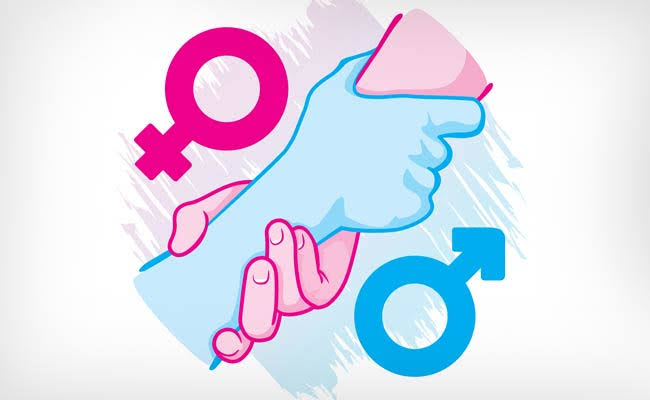Gender equality remains a cornerstone of contemporary discourse within sociopolitical frameworks, influencing legislative policies, economic paradigms, and cultural norms. The quest for parity between genders transcends mere numeric representation; it entails an intricate interplay of rights, opportunities, and social constructs that shape individuals’ lives. This essay seeks to unravel the multilayered fabric of gender equality, exploring its historical contingents, current challenges, and potential trajectories for future advocacy.
Historical Context: The Evolution of Gender Equality
The notion of gender equality has not always occupied the forefront of societal values. Historically, patriarchal structures dominated most civilizations, relegating women to subordinate roles confined to domestic spheres. The suffragette movement of the early 20th century facilitated women’s enfranchisement, yet the campaign for equality has persisted across different epochs. Echoes of early feminist theorists such as Mary Wollstonecraft, who passionately advocated for women’s education and autonomy in her seminal work, “A Vindication of the Rights of Woman,” underscore the prevailing sentiment for change. This foundational perspective laid the groundwork for contemporary feminist ideologies, emphasizing that gender inequality is not merely a women’s issue but a societal affliction that necessitates collective rectification.
The latter half of the 20th century witnessed seismic shifts in legislative frameworks that aimed to dismantle systemic barriers. The introduction of policies promoting equal pay, reproductive rights, and anti-discrimination laws symbolized progressive strides towards equitable treatment. Nevertheless, the realization of gender equality has remained an elusive goal, punctuated by persistent disparities in various sectors, including employment, education, and health.
The Contemporary Landscape: Challenges in Achieving Gender Parity
Despite significant advancements, the contemporary landscape reveals a plethora of obstacles that continue to impede gender equality. Employment remains a critical frontier where gender disparities manifest starkly. Women, despite constituting a substantial portion of the global workforce, often occupy lower-paying positions compared to their male counterparts. The phenomenon known as the “gender pay gap” underscores the systemic undervaluation of work typically performed by women, perpetuating economic fragility and dependency.
Moreover, cultural and societal norms entrenched in traditional gender roles further complicate the pursuit of equality. In many cultures, women face societal pressures that dictate their behavior, aspirations, and roles within families and communities. These cultural paradigms often limit women’s access to education and professional opportunities, fostering environments where discrimination flourishes. For example, in certain regions, girls are still denied education based on prevailing customs that prioritize male education over female.
The prevalence of gender-based violence presents another formidable challenge. According to the World Health Organization, approximately one in three women worldwide experiences physical or sexual violence in their lifetime, predominantly from intimate partners. Such violence not only violates fundamental human rights but also curtails women’s ability to participate fully in society, exacerbating gender inequalities. Consequently, the pervasive nature of violence against women necessitates comprehensive international responses that encompass legal, educational, and social dimensions.
Intersectionality: Understanding the Nuances of Gender Inequality
To grasp the complexity of gender equality, it is imperative to adopt an intersectional framework. Intersectionality, a term coined by legal scholar Kimberlé Crenshaw, elucidates how various identities—including race, class, sexuality, and disability—intersect to influence lived experiences of discrimination and privilege. This nuanced perspective resonates profoundly within discussions of gender equality, exposing the inadequacies of universal approaches that fail to account for these intersections.
For instance, women of color may face compounded discrimination that is distinct from that experienced by white women, rendering generalizations about gender equality insufficient. Economic disparities may likewise be exacerbated for women who belong to marginalized communities, further entrenching cycles of poverty and disenfranchisement. Thus, addressing gender inequality necessitates tailored interventions that consider diverse experiences and operationalize equity in varied contexts.
The Role of Education: Empowering Change Agents
Education emerges as a pivotal avenue for fostering gender equality and empowering individuals to challenge societal norms. Comprehensive education facilitates awareness of rights and cultivates critical thinking, equipping women—and indeed all individuals—with the tools to advocate for themselves and others. Evidence suggests that when women receive education, they are more likely to escape poverty, enhance their families’ health, and contribute meaningfully to their communities.
Moreover, educational initiatives promoting gender sensitivity can dismantle harmful stereotypes and foster environments where both genders thrive equally. Schools play a vital role in shaping cultural perceptions of gender and should thereby serve as platforms for instilling values of respect, equality, and non-violence from an early age. Curricula that incorporate discussions on gender, power dynamics, and social justice create fertile ground for future generations to challenge and reshape the status quo, thus advancing the cause of gender equality.
Strategies for Advocacy: Mobilizing Support for Gender Equality
To engender meaningful change, advocacy strategies must encompass a multifaceted approach. Grassroots campaigns that mobilize communities can elevate awareness and inspire action. Involvement of men as allies is imperative, as their participation can dismantle patriarchal norms and contribute to a more equitable society. Collaborative efforts that integrate diverse voices strengthen advocacy efforts, ensuring that marginalized perspectives are amplified in gender discussions.
Furthermore, policy advocacy aimed at governmental and institutional levels can effect systemic change. Initiatives to implement gender quotas in political and corporate leadership can facilitate women’s representation in decision-making processes. Establishing comprehensive anti-discrimination laws and promoting workplace practices that prioritize family-friendly policies can also create enabling environments where gender equality flourishes.
Conclusion: A Collective Responsibility
The pursuit of gender equality transcends individual aspirations; it necessitates a collective commitment to challenging entrenched systems of power and inequality. As society grapples with evolving gender dynamics, embracing intersectional perspectives while advancing educational and advocacy measures will be crucial in dismantling barriers that perpetuate gender disparities. In fostering inclusive environments that celebrate diversity, we can galvanize momentum towards a more equitable world. Gender equality is not merely a destination; it is an ongoing journey that requires the engagement and determination of all societal sectors. Only through collaborative action can we hope to achieve true equality, benefiting individuals and societies alike.





























